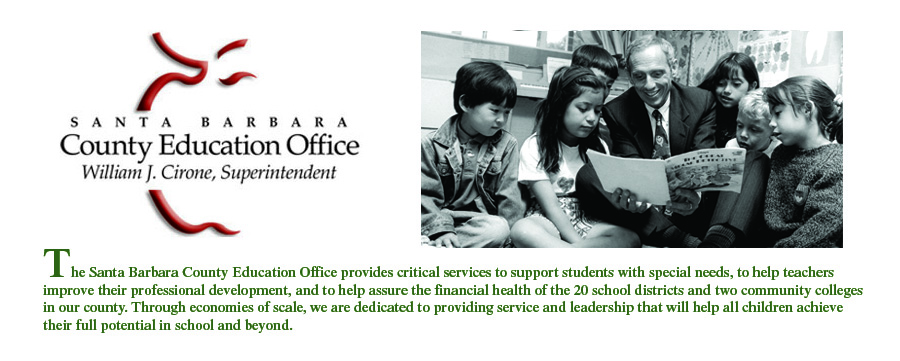By Bill Cirone, Santa Barbara County Superintendent of Schools
Newspaper Column
The United States is the most extraordinary country on earth. No argument there. Our daunting list of accomplishments spans virtually every field and enterprise, culminating year after year, as one small example, in our dominating number of Nobel Prizes. Our main strength is that we constantly strive to do better, and to look for excellent practices to help us reach even greater heights.
In terms of our educational delivery system, our top students are still the best in the world. Our test averages, when all students are included, tend more toward the middle on international rankings. Explanations abound on why this is the case, but it is still a goal to improve those standings. As we continue to strive to do better for all our students, it could be instructive to look at what is happening these days in Finland.
First, some facts: Finland started to transform its education system about 40 years ago as part of an economic recovery plan. By the year 2000, Finnish students scored best in the world in reading on PISA (Program for International Student Assessment), a test of 15-year-olds in more than 40 countries. By 2003, Finnish students also led the world in math. By 2006, they led in science among 57 countries. Three years later, the most recent data available shows they were second in science, third in reading, and sixth in math among about a half million students around the globe.
Some more facts: Finland does not require standardized tests, and has no ranking system for students, schools, or regions. “If you only measure the statistics, you miss the human aspect,” said one principal.
Schools are publicly funded and the people in the government agencies running them, from top to bottom, are all educators. Teachers nationwide contributed to a curriculum that provided guidelines, not mandates. “The result is that a Finnish child has a good shot at getting the same quality education no matter whether he or she lives in a rural village or a university town,” wrote Lynnell Hancock, a teacher at Columbia Graduate School. “The differences between weakest and strongest students are the smallest in the world.”
One teacher explained, “We prepared children to learn how to learn, not how to take a test.”
Children learn Finnish and Swedish plus one other language, usually beginning at age 9. Every teacher is required to earn a five-year master’s degree in theory and practice, at state expense, effectively being granted status on par with doctors and lawyers in the country.
More facts: Finnish teachers spend fewer hours at school and less time in classrooms than American teachers, using the extra time refining curriculum and assessing students. Children spend much more time playing outside, even in the cold Finnish winters. There is little homework. Schooling starts at age 7. Wrote one teacher: “Children learn better when they are ready. Why stress them out?”
Perhaps the major differences are social rather than academic. Finnish children do not come to school hungry or homeless. “Schools provide food, medical care, counseling, and taxi service if needed,” wrote Columbia’s Hancock, “and student health care is free.” Finland provides preschool for all five-year-olds, with an emphasis on play and socializing.
In terms of special education, almost all students are mainstreamed, learning beside students who don’t require those services. Finnish as a Second Language students receive intensive instruction from skilled experts.
Interestingly, the neighboring country of Norway, which is similar in size, uses standardized tests and a system more similar to ours. Like American PISA scores, Norway’s are in the middle ranges.
Again, the Finnish educational success story started in the ‘60s when the Parliament chose public education as the country’s best shot at economic recovery. “It was simply the idea that … if we want to be competitive, we need to educate everybody. It all came out of a need to survive,” wrote Pasi Sahlberg, of the Ministry of Education and Culture.
Many of these measures would not be feasible or maybe even desirable in our country. And it’s important to emphasize that we continue to take steps to improve our own delivery systems. Our new Common Core curriculum is widely praised as moving both learning and assessment in the right direction.
Finland’s model does raise an important question, however, regarding our lurch toward test scores as the sole tool of accountability. Especially in times of constricted resources, this laser-like focus on test scores has stripped many of our students of access to music, art, critical thinking skills, and the joy of learning. It has also diminished our respect for teachers as the able professionals who are best equipped to evaluate and instruct our young people.
It is worth contemplating whether this tradeoff has been for the better, especially in light of the facts on Finland.
